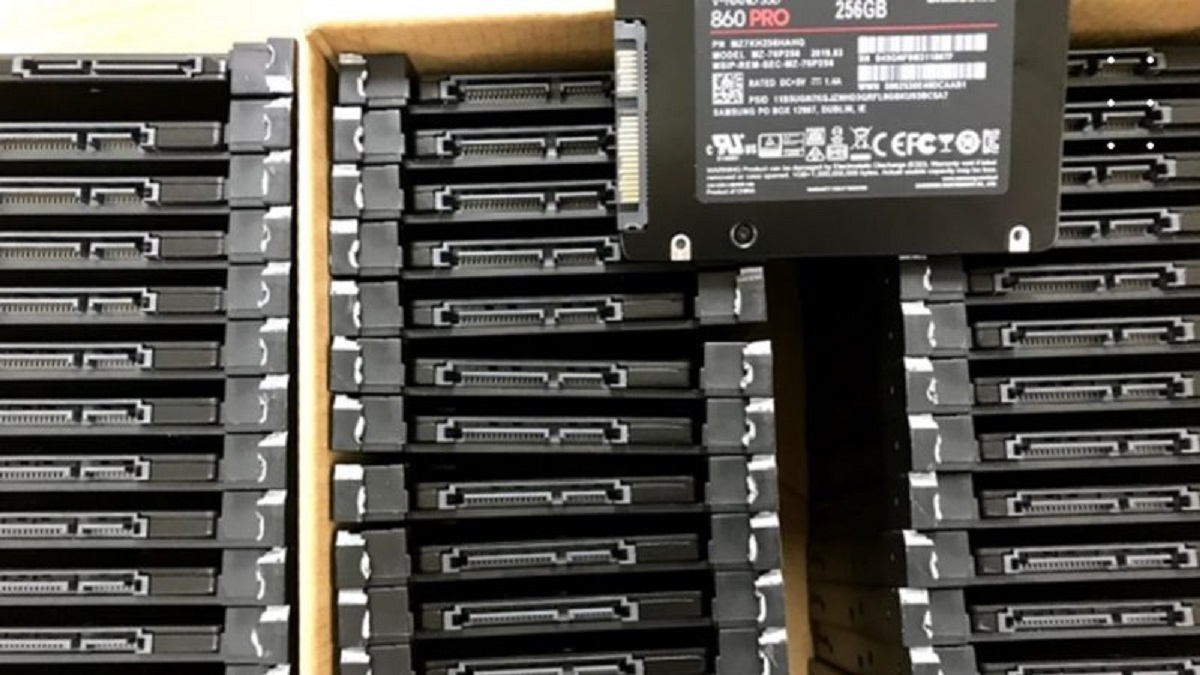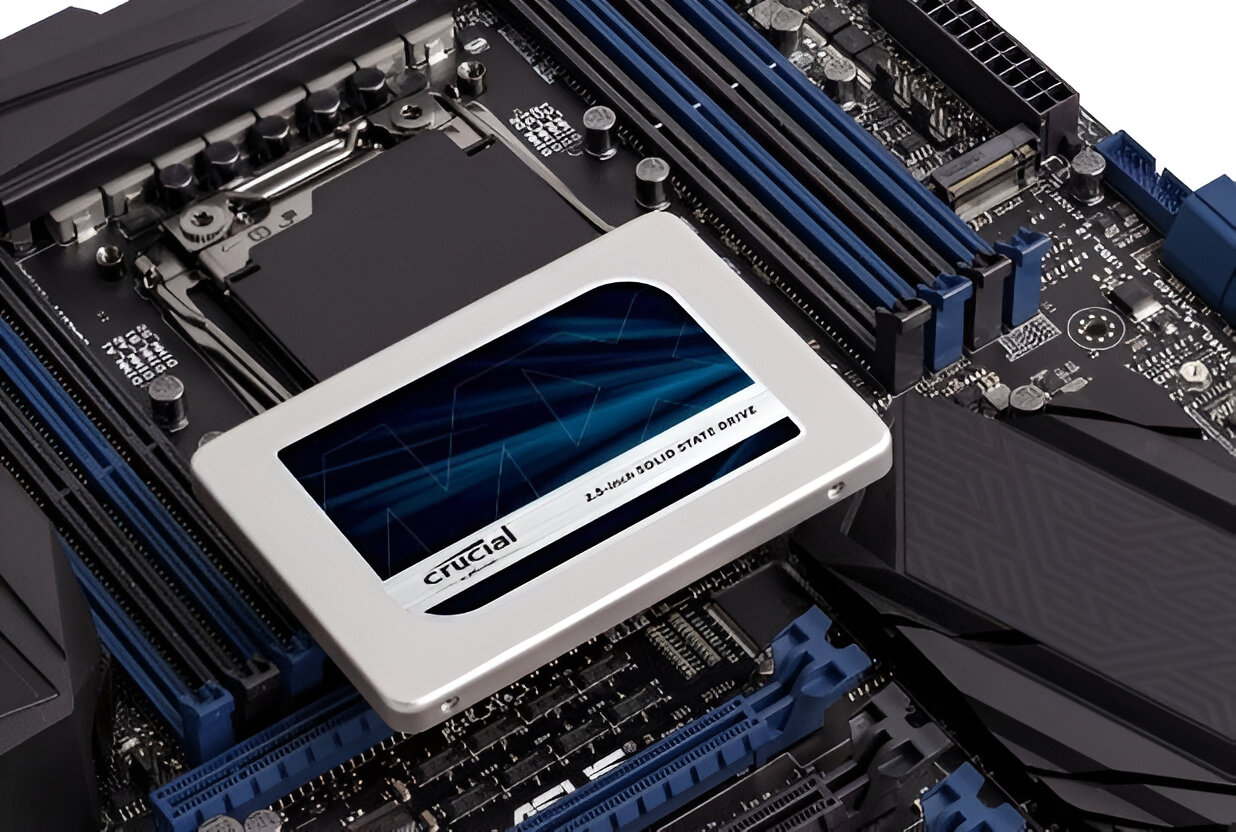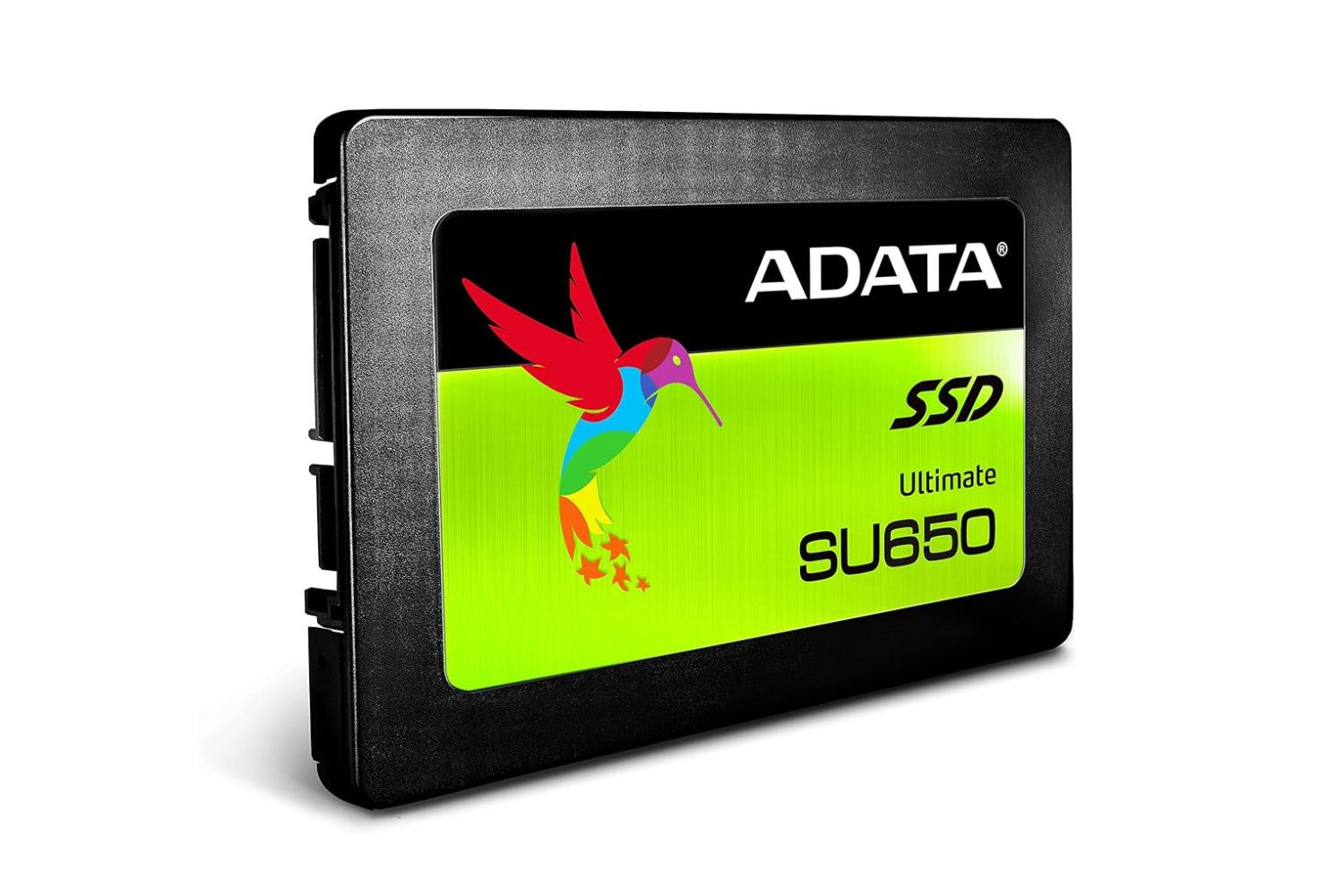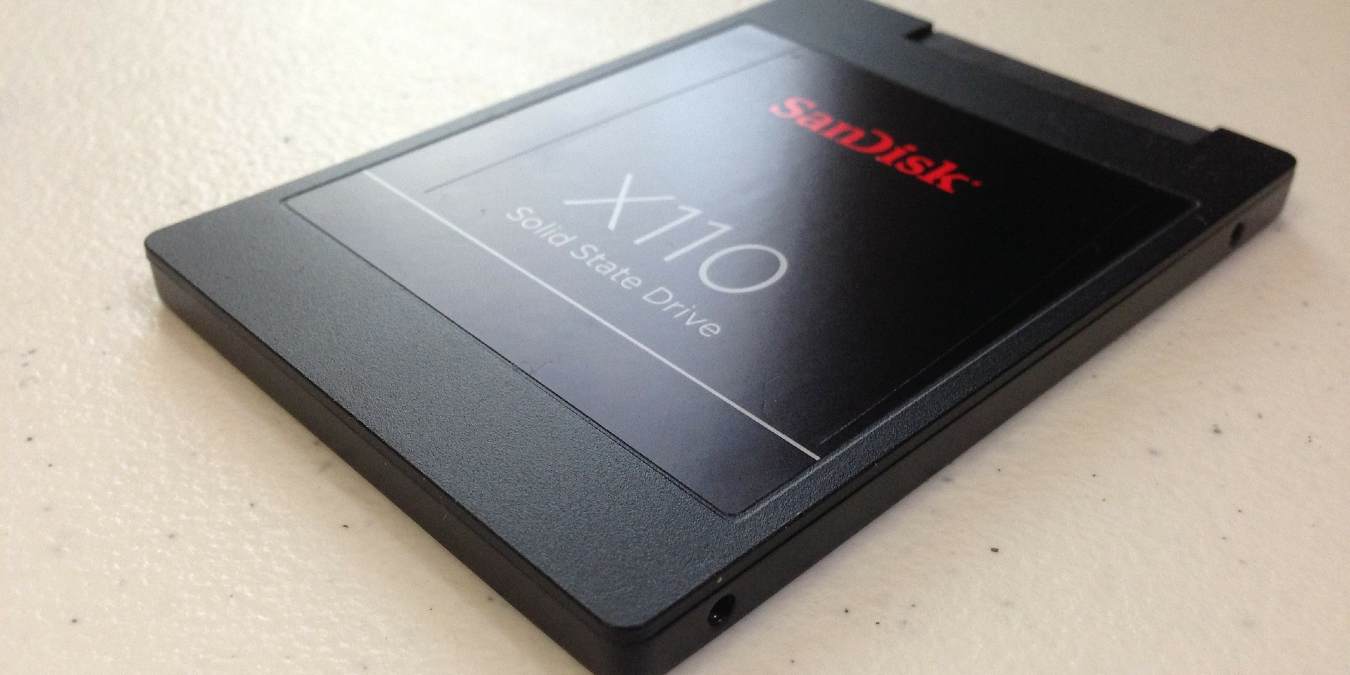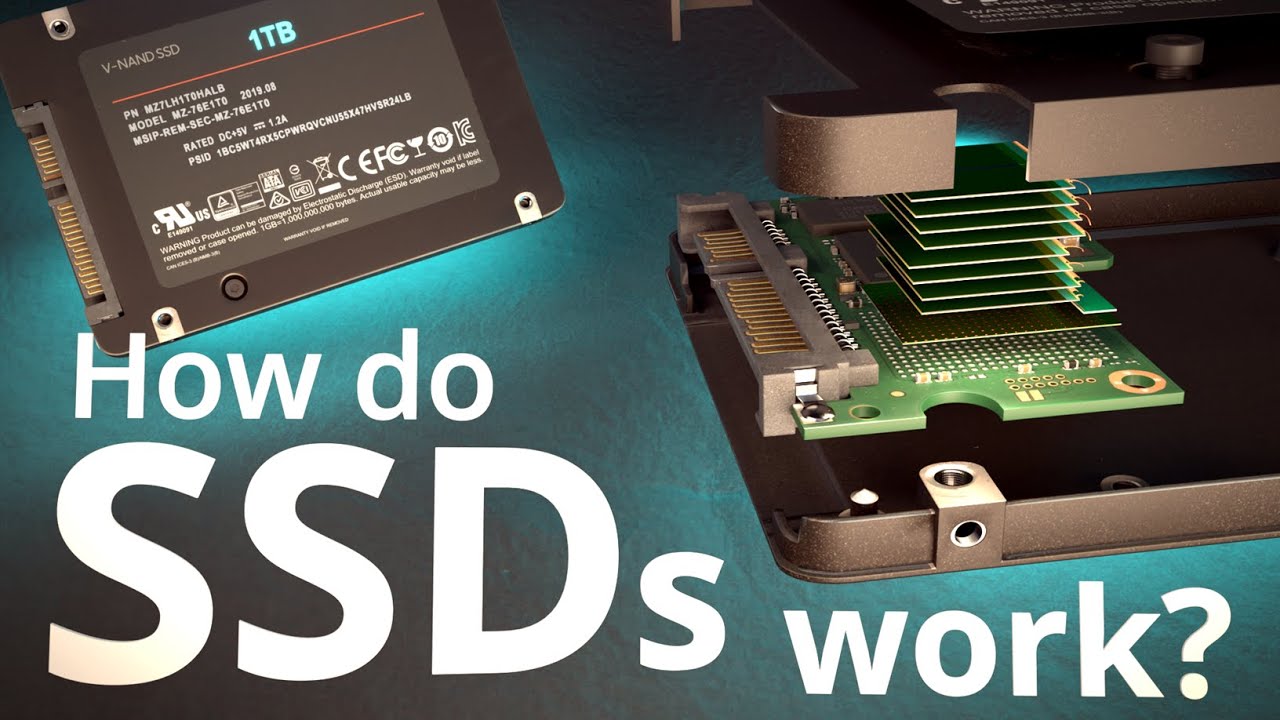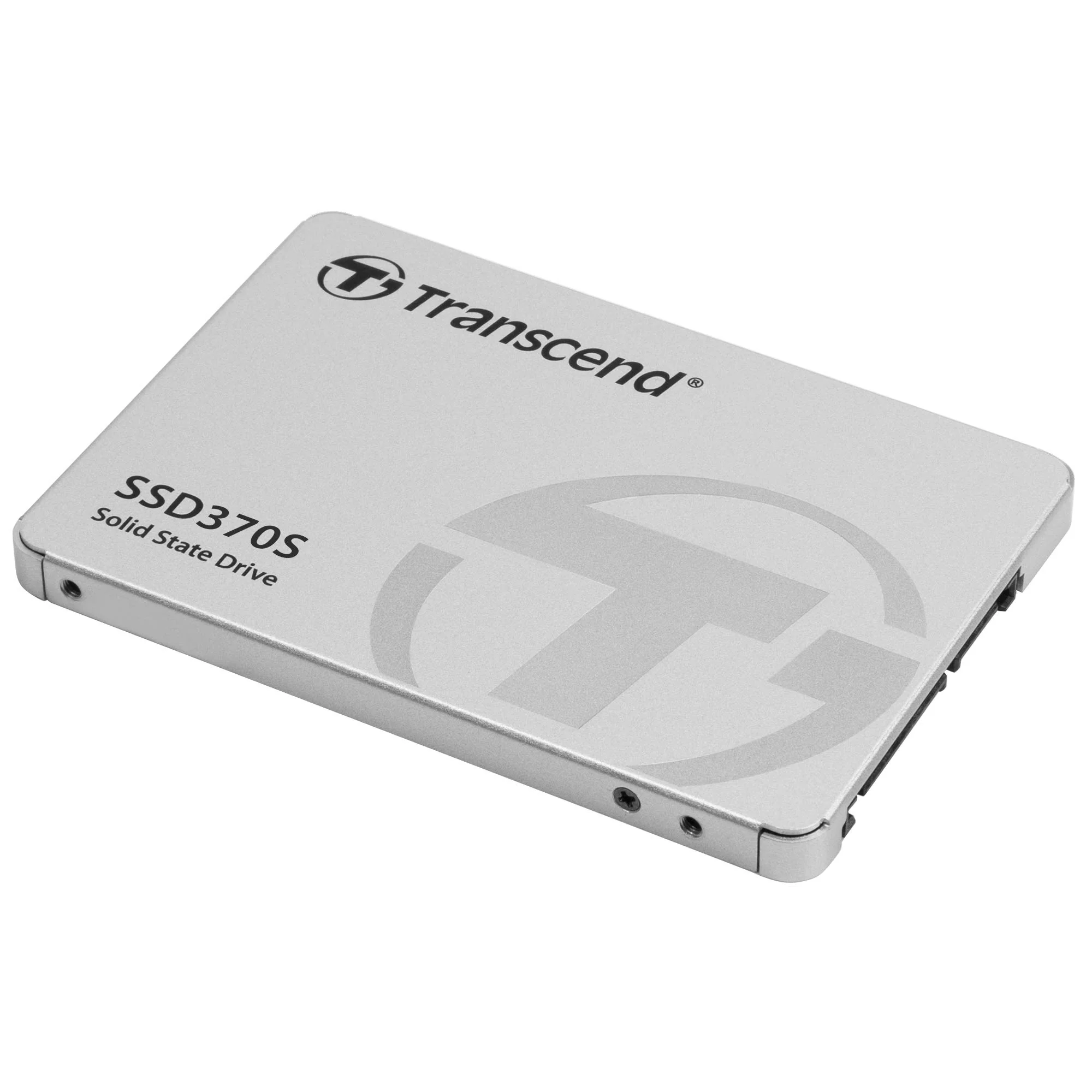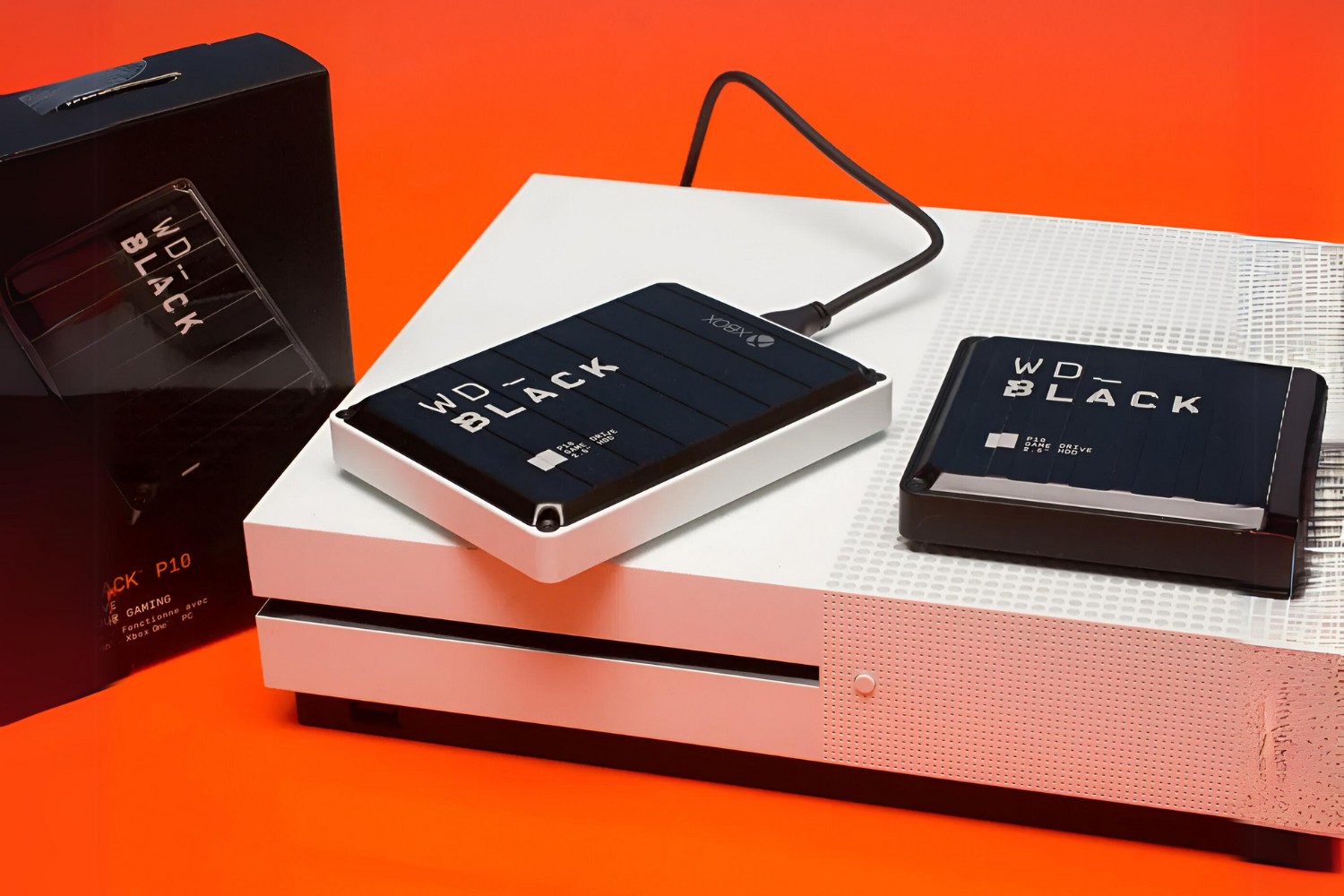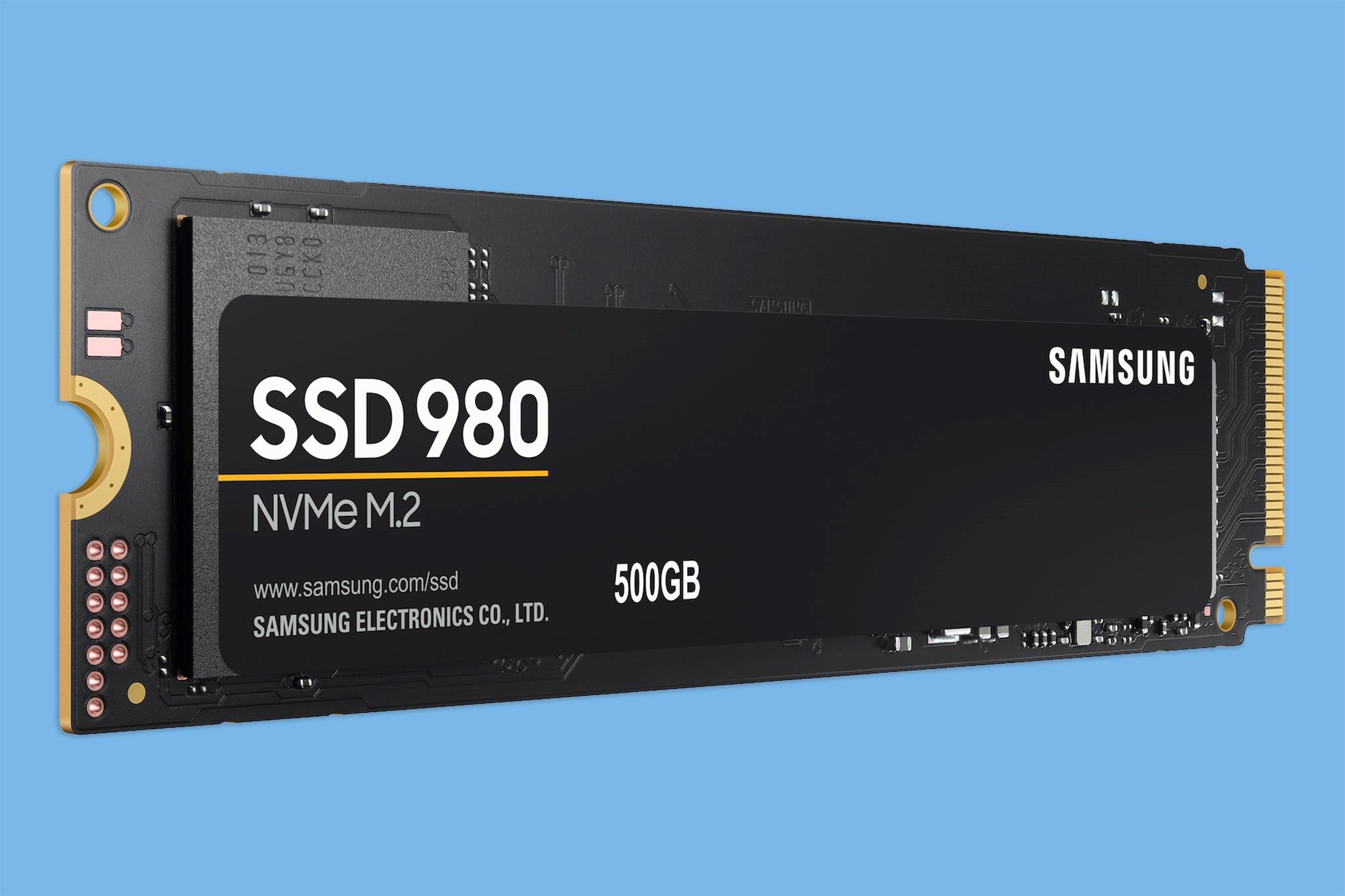Introduction
Welcome to the world of NAND solid-state drives (SSDs), where technology is rapidly transforming the way we store and access data. From speeding up our computers to providing reliable storage solutions for data centers, NAND SSDs have become an integral part of our digital lives.
But what exactly is NAND and how does it work? In this article, we will explore the basics of NAND flash technology, delve into the inner workings of a solid-state drive, discuss the advantages of NAND SSDs, and compare them with traditional hard disk drives (HDDs).
NAND flash is a type of non-volatile memory technology that allows for fast, electrically erasable and reprogrammable storage of data. Unlike volatile memory, which requires a constant power supply to retain data, NAND retains data even when the power is turned off. This makes it an ideal choice for storage devices like SSDs, where data needs to be stored for extended periods.
SSDs, which are based on NAND flash memory, have gained immense popularity in recent years due to their lightning-fast performance, increased durability, and compact form factor. Instead of relying on spinning disks like HDDs, SSDs use NAND flash memory chips to store data electronically. This allows for significantly faster data access speeds, lower power consumption, and resistance to shock and vibration.
One of the key advantages of NAND SSDs is their superior read and write speeds compared to traditional HDDs. With no mechanical parts involved, data retrieval from SSDs is virtually instantaneous, enabling faster boot times, quicker file transfers, and smoother multitasking.
Furthermore, NAND SSDs offer improved reliability and durability. Since there are no moving parts, the risk of mechanical failures or data loss due to physical impact is greatly reduced. This makes them an ideal choice for portable devices like laptops, where durability is paramount.
Stay tuned as we explore the different types of NAND SSDs, the variations in NAND flash cells, the lifespan of these drives, and the reasons why they are the preferred choice over traditional HDDs. With the improvements in NAND flash technology, the future of data storage is brighter than ever.
What Is NAND Flash?
NAND flash is a type of non-volatile memory technology that is commonly used in solid-state drives (SSDs), USB flash drives, and other electronic devices for data storage. It is named after the Logic Gate “NAND” (NOT AND) operation, which is one of the fundamental operations in digital logic circuits.
In NAND flash, data is stored in memory cells organized as a series of memory cells connected in a grid-like structure. Each memory cell consists of a floating-gate transistor, which stores charge to represent data. The presence or absence of charge in the floating-gate determines the binary state of the cell, with charged representing “1” and uncharged representing “0”.
The grid-like structure of NAND flash allows for high-density data storage, meaning that a large amount of data can be stored in a small physical space. This makes NAND flash an ideal choice for portable devices where size and weight are important considerations.
NAND flash memory operates in a page-based structure. Each page typically consists of several kilobytes of data and is the smallest unit that can be read from or written to in NAND flash. To modify data within a page, the entire page must be erased and then rewritten, which can be a time-consuming process. This is known as the erase-before-write characteristic of NAND flash and affects the overall performance of SSDs.
There are different types of NAND flash technology, including Single-Level Cell (SLC), Multi-Level Cell (MLC), Triple-Level Cell (TLC), and Quad-Level Cell (QLC).
SLC is the oldest and most expensive type of NAND flash, storing one bit of data per memory cell. It offers the highest performance, endurance, and data retention among all the types. MLC, on the other hand, stores two bits of data per memory cell, making it more cost-effective but with slightly lower performance and endurance.
TLC and QLC are the more recent developments in NAND flash, storing three and four bits of data per memory cell, respectively. These types offer higher storage capacities at more affordable prices but have lower performance, endurance, and data retention compared to SLC and MLC.
Overall, NAND flash has revolutionized the world of data storage by providing faster, more reliable, and compact solutions. As technology continues to evolve, we can expect further advancements and innovations in NAND flash, enhancing the performance and capacity of storage devices.
How Does a Solid State Drive (SSD) Work?
A solid-state drive (SSD) is a storage device that uses NAND flash memory to store data electronically. Unlike traditional hard disk drives (HDDs) that rely on spinning disks and mechanical read/write heads, SSDs utilize integrated circuits to store and retrieve data. Understanding how SSDs work can help us appreciate their advantages over HDDs.
The core component of an SSD is the NAND flash memory, which consists of multiple memory cells organized in a grid-like structure. Each memory cell can store multiple bits of data, depending on the type of NAND flash used. When data is written to an SSD, the controller sends electrical signals to the memory cells and alters their states, representing the data as electrical charges.
SSDs are composed of multiple NAND flash memory chips, which are interconnected to form a grid of memory cells. These memory chips are controlled by an SSD controller, which manages the data flow and performs functions such as error correction, wear leveling, and garbage collection.
When you save or retrieve data from an SSD, the controller reads or writes the data by sending electronic signals to the appropriate memory cells. Unlike HDDs, which rely on physical movement to access data, SSDs have near-instant access times, resulting in faster data transfer and application loading speeds.
One drawback of NAND flash memory is its erase-before-write nature. When new data needs to be written to an SSD, the controller cannot simply overwrite the existing data in a memory cell. Instead, it must erase the entire block of data in which the target memory cell is located before writing the new data. This process is completed by transferring the existing data to a different location in the NAND flash memory before erasing the block.
To optimize performance and prolong the lifespan of an SSD, advanced algorithms and techniques are employed. These include wear leveling, which distributes data evenly across the memory cells to prevent excessive wear on specific cells, and TRIM, which allows the operating system to inform the SSD controller which data is no longer needed and can be erased.
Overall, SSDs provide numerous advantages over HDDs, including faster data access times, higher read/write speeds, lower power consumption, and resistance to shock and vibration. As technology advances, we can expect further improvements in SSD performance, capacity, and affordability, making them the go-to choice for storage solutions in both consumer and enterprise environments.
Advantages of NAND SSDs
NAND solid-state drives (SSDs) offer a multitude of advantages over traditional hard disk drives (HDDs), making them the preferred choice for many storage applications. Let’s explore some of the key advantages of NAND SSDs.
1. Faster Performance: One of the biggest advantages of NAND SSDs is their impressive speed. Unlike HDDs that rely on mechanical parts to read and write data, SSDs use NAND flash memory to store and retrieve data electronically. This results in significantly faster data access times, faster boot times, and quicker file transfers. SSDs are especially beneficial for applications that require high-speed data processing, such as gaming, content creation, and database management.
2. Reliability and Durability: NAND SSDs offer enhanced reliability and endurance compared to HDDs. Since SSDs have no moving parts, they are not susceptible to mechanical failures due to shocks or vibrations. This makes them ideal for portable devices like laptops, which are often subjected to frequent movement. Additionally, NAND flash memory has a longer lifespan compared to traditional magnetic storage, allowing for more read/write cycles before degradation.
3. Compact and Lightweight: NAND SSDs are much smaller and lighter than HDDs. This compact form factor makes them ideal for devices with limited space, such as ultrabooks, tablets, and compact desktops. The smaller size of NAND SSDs also allows for greater flexibility in terms of installation options and portability.
4. Improved Energy Efficiency: NAND SSDs consume significantly less power compared to HDDs. Since SSDs do not rely on spinning disks or mechanical read/write heads, they require less energy to operate. This not only results in longer battery life for portable devices but also lowers overall power consumption, making SSDs a greener and more energy-efficient storage solution.
5. Silent Operation: With no mechanical components, NAND SSDs operate silently. Unlike HDDs that produce noise from spinning disks and moving read/write heads, SSDs provide a quiet and noise-free computing experience. This is particularly beneficial for professional environments or home offices where noise reduction is essential.
6. Resistance to Temperature and Magnetic Fields: NAND SSDs are more resilient to extreme temperatures and magnetic fields compared to HDDs. This makes them suitable for environments with varying temperature conditions or with a high likelihood of exposure to magnetic fields, such as industrial settings or areas near magnetic equipment.
Overall, the advantages of NAND SSDs make them an attractive choice for both personal and professional storage needs. Their faster performance, reliability, energy efficiency, compact size, and silent operation contribute to an improved user experience and enhanced productivity.
Types of NAND SSDs
There are various types of NAND solid-state drives (SSDs) available in the market, each offering different performance levels, capacities, and cost considerations. Understanding these different types can help you choose the right SSD for your specific needs. Let’s explore the common types of NAND SSDs:
1. SATA SSDs: SATA (Serial Advanced Technology Attachment) SSDs are the most common type of SSDs available. They use the SATA interface, which is widely supported by most motherboards and laptops. SATA SSDs offer significant performance improvements over traditional hard disk drives (HDDs) and are available in a range of capacities. However, their performance is limited compared to other types of SSDs due to the bottleneck of the SATA interface.
2. PCIe SSDs: PCIe (Peripheral Component Interconnect Express) SSDs connect directly to the PCIe slot on the motherboard, providing faster data transfer speeds compared to SATA SSDs. Being able to bypass the SATA bottleneck, PCIe SSDs offer significantly faster performance, making them ideal for gaming, multimedia editing, and data-intensive applications. PCIe SSDs are available in various form factors, including M.2 and add-in cards (AIC).
3. NVMe SSDs: NVMe (Non-Volatile Memory Express) SSDs are designed specifically for the PCIe interface, utilizing the NVMe protocol to maximize performance. NVMe SSDs offer incredibly fast read and write speeds, low latency, and high throughput. These SSDs are commonly used in high-end gaming rigs, workstations, and data centers where speed and reliability are crucial.
4. M.2 SSDs: M.2 SSDs are small, compact form factor SSDs that connect directly to the motherboard via the M.2 slot. These SSDs are available in both SATA and PCIe versions, providing flexibility and compatibility with different systems. M.2 SSDs are commonly used in ultrabooks, mini PCs, and compact desktops due to their small size and high performance.
5. U.2 SSDs: U.2 SSDs are similar to M.2 SSDs in terms of form factor, but they use the U.2 interface instead of the M.2 slot. U.2 SSDs offer higher performance capabilities and larger storage capacities, making them suitable for enterprise-class storage solutions and server applications.
6. External SSDs: External SSDs are portable storage devices that connect to a computer or other devices via USB or Thunderbolt interfaces. These SSDs provide the convenience of high-speed data transfer and large storage capacities in a compact and portable form. External SSDs are popular among professionals and travelers who require fast and reliable storage on-the-go.
When choosing an SSD, it’s important to consider your specific requirements, such as the intended use, performance needs, capacity requirements, and budget. Each type of NAND SSD offers distinct advantages, so understanding their differences can help you make an informed decision and find the perfect SSD for your needs.
Types of NAND Flash Cells
NAND flash memory, the technology behind solid-state drives (SSDs), comes in different types of cells that determine the capacity, performance, and endurance of the NAND SSD. Let’s explore the common types of NAND flash cells:
1. Single-Level Cell (SLC): SLC is the oldest and most expensive type of NAND flash cell. It stores one bit of data (either a “0” or a “1”) in each memory cell. SLC offers superior performance, endurance, and data retention compared to other types of NAND flash. It has the fastest read and write speeds, the longest lifespan, and the highest level of data integrity. SLC SSDs are commonly used in enterprise applications that require high performance, reliability, and durability, such as server caching and database storage.
2. Multi-Level Cell (MLC): MLC stores two bits of data in each memory cell, allowing for higher storage densities and lower cost per gigabyte compared to SLC. However, MLC has slightly lower performance, endurance, and data retention compared to SLC. MLC SSDs offer a good balance between performance and affordability, making them suitable for consumer and enterprise applications.
3. Triple-Level Cell (TLC): TLC stores three bits of data in each memory cell, offering even higher storage densities and lower cost per gigabyte than MLC. However, TLC has lower performance, endurance, and data retention compared to both SLC and MLC. TLC SSDs are typically used in consumer-grade devices where cost efficiency and moderate performance are prioritized.
4. Quad-Level Cell (QLC): QLC is the latest development in NAND flash technology and stores four bits of data in each memory cell. QLC provides the highest storage densities and the lowest cost per gigabyte among all types of NAND flash. However, QLC also exhibits lower performance, endurance, and data retention compared to SLC, MLC, and TLC. QLC SSDs are commonly found in consumer-grade applications where large capacities at affordable prices are key, such as consumer laptops and external storage devices.
As the density of data stored in each cell increases, the performance, endurance, and data retention of the NAND flash cell decrease. However, advancements in flash memory controller technology and error correction algorithms have made it possible to mitigate some of these drawbacks and improve the overall performance and reliability of NAND SSDs.
When choosing an SSD, consider the type of NAND flash cell used and how it aligns with your specific needs. SLC provides the highest performance and endurance but at a higher cost, while TLC and QLC offer higher storage capacities and affordability at the expense of some performance and durability. Understanding the trade-offs of each type can help you make an informed decision and choose the SSD that best suits your requirements.
SLC vs MLC vs TLC vs QLC
When it comes to NAND flash memory used in solid-state drives (SSDs), there are several types available, each offering different performance, endurance, and cost characteristics. Let’s compare the four main types of NAND flash cells: Single-Level Cell (SLC), Multi-Level Cell (MLC), Triple-Level Cell (TLC), and Quad-Level Cell (QLC).
SLC: SLC is the oldest and most expensive type of NAND flash cell. It stores one bit of data (either a “0” or a “1”) in each memory cell, providing the highest performance, endurance, and data retention. SLC SSDs are known for their superior read and write speeds, long lifespan, and data integrity. These drives are often used in enterprise applications that require high performance and durability, such as server caching and database storage.
MLC: MLC stores two bits of data in each memory cell, which allows for higher storage densities and lower cost per gigabyte compared to SLC. Although MLC has lower performance, endurance, and data retention compared to SLC, it still provides a good balance between performance and affordability. MLC SSDs are widely used in various applications, including consumer-grade devices and enterprise environments.
TLC: TLC takes storage density and cost-efficiency even further by storing three bits of data in each memory cell. This allows for even higher storage capacities at a lower cost per gigabyte. However, TLC SSDs have lower performance, endurance, and data retention compared to SLC and MLC. TLC SSDs are commonly found in consumer-grade devices where cost efficiency and moderate performance are primary considerations.
QLC: QLC is the latest advancement in NAND flash technology and stores four bits of data in each memory cell, achieving the highest storage densities and lowest cost per gigabyte among all types of NAND flash cells. While QLC SSDs provide larger capacities at more affordable prices, they come with lower performance, endurance, and data retention compared to SLC, MLC, and TLC. QLC SSDs are often used in consumer-grade applications where large storage capacities at a budget-friendly price point are crucial.
It’s important to note that as the density of data stored in each cell increases (from SLC to MLC to TLC to QLC), the performance, endurance, and data retention of the NAND flash cell generally decrease. However, advancements in SSD controller technology and sophisticated error correction algorithms have helped mitigate some of these drawbacks, allowing manufacturers to enhance the overall performance and reliability of NAND SSDs.
When selecting an SSD, consider your specific needs and budget. SLC provides the highest performance and endurance but at a higher cost, while TLC and QLC offer larger capacities and affordability at the expense of some performance and durability. Understanding the trade-offs of each type will help you make an informed decision and choose the right SSD for your requirements.
NAND SSD Lifespan
One common concern when it comes to NAND solid-state drives (SSDs) is their lifespan or how long they can reliably store data. Let’s delve into the factors that affect the lifespan of NAND SSDs and what you can expect in terms of their durability.
NAND flash memory, the technology behind SSDs, has a limited number of program/erase cycles before it starts to degrade. Each NAND flash cell has a specified endurance, which is the number of times it can be written to and erased before it becomes unreliable. The lifespan of an SSD depends on various factors:
1. NAND Flash Type: The type of NAND flash used in an SSD has a significant impact on its lifespan. Generally, SLC (Single-Level Cell) flash has the highest endurance, followed by MLC (Multi-Level Cell), TLC (Triple-Level Cell), and QLC (Quad-Level Cell). SLC offers the longest lifespan, while QLC has the lowest endurance. However, advanced error correction and wear leveling algorithms help extend the lifespan of all types of NAND SSDs.
2. Usage Patterns: The usage patterns and workload on an SSD can affect its lifespan. SSDs used in high-demand applications where data is frequently written and erased, such as database servers, will have a shorter lifespan compared to SSDs used in less write-intensive scenarios, like personal computers for general use.
3. Overprovisioning: Overprovisioning is the reserved space on an SSD that is not accessible by the user. This space allows for improved performance, wear leveling, and error correction. A higher overprovisioning percentage can prolong the lifespan of an SSD as it provides more spare NAND flash cells to distribute the write/erase cycles evenly.
4. Temperature and Operating Conditions: The operating temperature and environmental conditions can impact the lifespan of an SSD. High temperatures can accelerate the degradation of the NAND flash cells, leading to a shorter lifespan. It’s important to use SSDs within the specified temperature range and provide adequate cooling.
5. SSD Controller and Firmware: The quality and efficiency of the SSD controller and firmware play a crucial role in managing the NAND flash cells, optimizing performance, and prolonging the lifespan of the SSD. Advanced wear leveling, error correction, and garbage collection algorithms implemented in the controller can help mitigate the wear on the NAND flash and ensure even distribution of data writes and erases.
It’s worth noting that modern SSDs are designed to provide a sufficiently long lifespan for typical usage scenarios. The endurance of consumer-grade SSDs is often measured in terabytes written (TBW), indicating the total amount of data that can be written to the SSD throughout its lifespan.
While the exact lifespan of an SSD will vary depending on usage patterns and other factors, the average consumer SSD can typically withstand several terabytes (TB) to hundreds of terabytes (TB) of writes before reaching its rated endurance limit. For most users, this translates to many years of reliable use.
Overall, with proper usage, temperature management, and regular firmware updates, NAND SSDs are capable of providing a long lifespan and reliable storage for your data.
SSD vs HDD: Why Choose NAND SSDs?
When it comes to choosing storage options for your computer or other devices, the decision often comes down to solid-state drives (SSDs) or hard disk drives (HDDs). While both serve the purpose of data storage, there are several compelling reasons to choose NAND SSDs over traditional HDDs. Let’s explore why NAND SSDs have become the preferred choice for many users:
1. Faster Performance: One of the most significant advantages of NAND SSDs is their superior performance compared to HDDs. SSDs use NAND flash memory, allowing for near-instantaneous data access times and lightning-fast read and write speeds. This translates into faster boot times, quicker application launches, and smoother multitasking. Whether you’re a gamer, content creator, or professional relying on resource-intensive applications, the speed of SSDs can greatly enhance your overall computing experience.
2. Reliability and Durability: NAND SSDs are more reliable and durable than traditional HDDs. HDDs consist of spinning disks and mechanical read/write heads that are prone to failure due to mechanical wear and tear, shocks, or vibrations. In contrast, SSDs have no moving parts, making them highly resistant to physical impact and offering improved reliability. This makes NAND SSDs particularly suitable for portable devices like laptops and external storage drives.
3. Compact and Lightweight: NAND SSDs are significantly smaller and lighter than HDDs. The compact form factor of SSDs allows for easy installation in various devices, including ultrabooks, tablets, and small form factor PCs. This makes NAND SSDs the go-to choice for those seeking storage solutions with minimal space requirement and lighter weight.
4. Energy Efficiency: NAND SSDs consume considerably less power compared to HDDs. Since SSDs do not rely on spinning disks or mechanical components, they are more energy-efficient. This results in longer battery life for laptops and reduced overall power consumption. Using an SSD can not only enhance the performance of your device but also contribute to energy savings and a greener environment.
5. Silent Operation: Unlike HDDs, which generate noise due to the spinning disks and moving read/write heads, NAND SSDs operate silently. With no moving parts, SSDs provide a quiet and noise-free computing experience. This is especially beneficial for professionals working in sound-sensitive environments, such as recording studios or quiet office spaces.
6. Shock and Vibration Resistance: NAND SSDs are highly resistant to shocks and vibrations. The absence of mechanical components in SSDs makes them less susceptible to damage caused by accidental drops or rough handling. This makes NAND SSDs the ideal choice for users who rely on their devices in rugged or mobile environments.
While HDDs still have their place in certain scenarios, such as when large capacities are required at a lower cost, the numerous advantages of NAND SSDs make them the preferred choice for many users. The faster performance, reliability, compact size, energy efficiency, silent operation, and shock resistance of NAND SSDs contribute to an overall improved computing experience.
Conclusion
NAND solid-state drives (SSDs) have revolutionized the world of data storage with their superior performance, reliability, and compact form factor. Unlike traditional hard disk drives (HDDs), NAND SSDs utilize NAND flash memory to store and retrieve data electronically, offering lightning-fast read and write speeds, enhanced durability, and a range of other benefits.
Understanding the basic principles of NAND flash memory, including the different types of NAND SSDs, NAND flash cells, and their respective advantages, is crucial in making informed decisions when it comes to storage solutions.
SLC, MLC, TLC, and QLC NAND flash cells offer different trade-offs between performance, endurance, and cost. SLC provides the highest performance and endurance but at a higher cost, while TLC and QLC offer larger capacities at more affordable prices, although with slightly reduced performance and endurance.
When choosing an SSD, it’s important to consider factors like usage patterns, temperature management, and firmware optimizations. These factors can impact the lifespan and long-term reliability of NAND SSDs.
Compared to HDDs, NAND SSDs have several advantages such as faster performance, improved reliability, compact size, energy efficiency, silent operation, and shock resistance. Whether you’re a casual user looking for increased speed and responsiveness or a professional in need of reliable and durable storage, NAND SSDs provide significant benefits across a wide range of use cases.
The future of NAND flash technology looks promising, with continued advancements expected to further improve the performance, capacity, and affordability of SSDs. As SSDs become more prevalent, we can expect even greater innovation and integration of NAND flash memory into various electronic devices.
In the end, choosing NAND SSDs over traditional HDDs offers a host of advantages that can greatly enhance your computing experience. From faster boots and application launches to increased durability and energy efficiency, NAND SSDs have proven to be the preferred storage choice for many users. Embracing this technology opens up a world of possibilities for faster, more reliable, and efficient data storage solutions.







